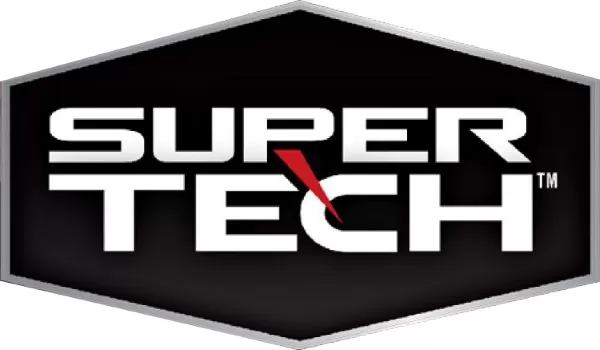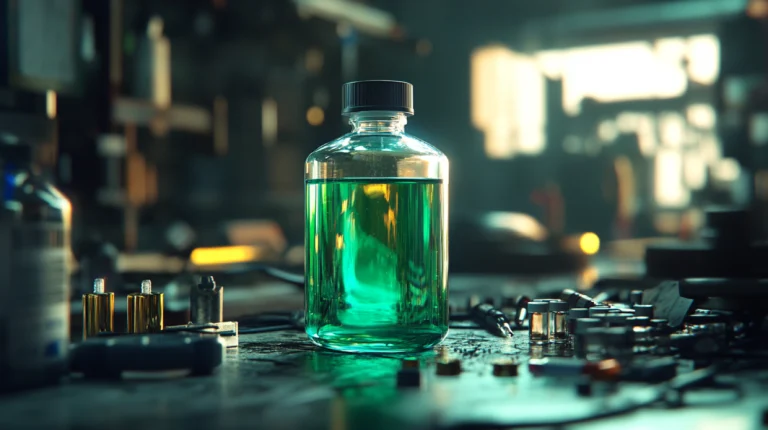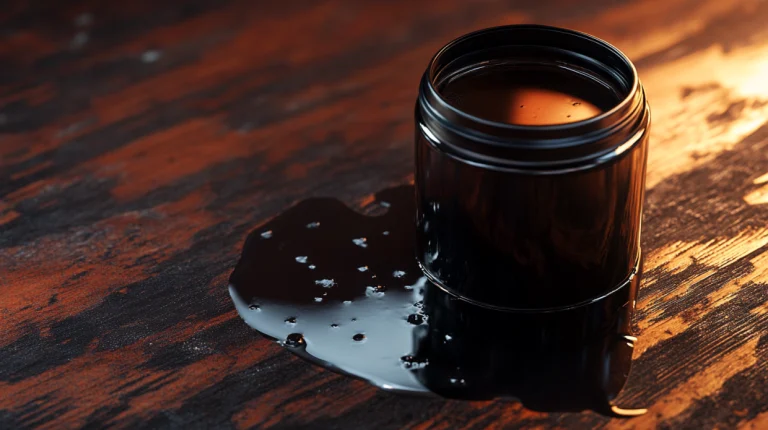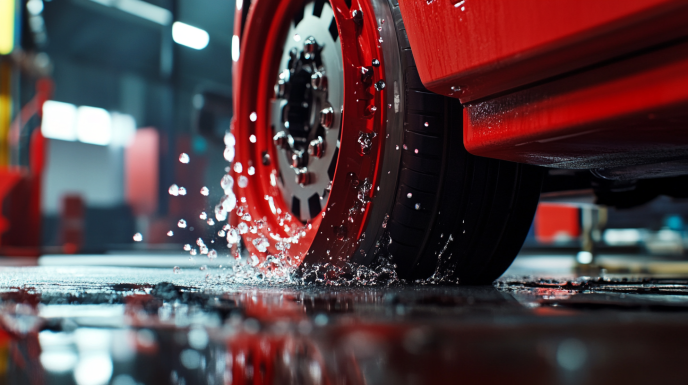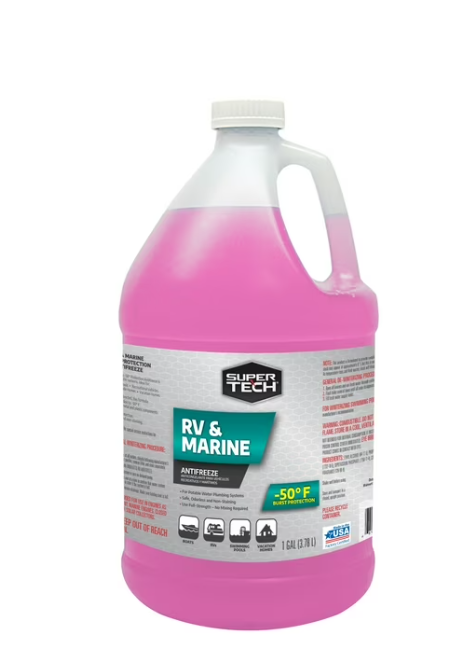
Super Tech RV and Marine Antifreeze, 1 Gallon
- Super Tech RV and Marine Antifreeze, 1 Gallon
- 50 degrees F burst protection
- Easy-pour bottle makes winterizing your vehicle simple
- Helps keep potable water plumbing systems in RVs, boats, pools and vacation homes running in low temperature situations
Safeguarding Your Mobile Lifestyle Against Winter’s Grip
As the leaves begin to turn and temperatures start to drop, RV enthusiasts and boat owners face a critical seasonal challenge: protecting their vehicles and vessels from the destructive forces of winter. Among the arsenal of winter protection products available today, Super Tech RV and Marine Antifreeze stands out as an essential solution for anyone looking to preserve their investment through the cold months ahead.
Having spent over two decades winterizing everything from small fishing boats to luxury motorhomes, I’ve learned that choosing the right antifreeze isn’t just about preventing freezing—it’s about peace of mind. Let me share what I’ve discovered about this popular product and why it might be the winter protection solution you’ve been searching for.
Understanding Super Tech RV and Marine Antifreeze: The Basics
Super Tech RV and Marine Antifreeze is specifically formulated to protect the water systems in recreational vehicles and marine craft during winter storage. Unlike automotive antifreeze, which is highly toxic and designed for closed cooling systems, RV and marine antifreeze is intended for potable water systems and is formulated to be much safer.
The distinctive pink liquid is instantly recognizable to seasoned RV and boat owners. This isn’t just a color choice—it serves as a visual indicator that helps you identify when the system has been properly flushed. The pink hue makes it immediately obvious if the antifreeze has reached all parts of your water system, ensuring complete protection.
The primary purpose of Super Tech RV and Marine Antifreeze is to prevent water in your vehicle’s pipes, drains, and tanks from freezing, expanding, and causing potentially catastrophic damage. Water expands roughly 9% when it freezes, which is more than enough to crack pipes, damage fittings, and create leaks that could cost thousands to repair. By replacing the water in your system with antifreeze, you eliminate this risk.
Safety First: Is Super Tech RV and Marine Antifreeze Non-Toxic?
One of the most common questions I hear from new RV owners concerns safety. Yes, Super Tech RV and Marine Antifreeze is formulated to be non-toxic, making it safe for use in drinking water systems. The product uses propylene glycol as its base rather than ethylene glycol (found in automotive antifreeze), which is significantly less toxic.
While the antifreeze is considered safe for incidental contact with drinking water systems, it’s important to note that this doesn’t mean you should drink it. The product is classified as “generally recognized as safe” by regulatory standards, but it’s still a chemical formulation that isn’t intended for consumption.
Before using your water system in the spring, you should thoroughly flush all antifreeze from the system. The pink coloration helps here again—continue flushing until the water runs clear. Most manufacturers recommend running fresh water through the system for several minutes to ensure all traces of antifreeze have been removed.
This safety profile also makes Super Tech RV and Marine Antifreeze septic-system safe. If you’re winterizing a cabin, cottage, or other property with a septic system, you don’t need to worry about draining the antifreeze into your septic tank during the spring flush.
How Super Tech RV and Marine Antifreeze Works: The Science of Protection
The science behind Super Tech RV and Marine Antifreeze is fascinating yet straightforward. The propylene glycol base lowers the freezing point of water significantly. Standard formulations protect against burst pipes down to approximately -50°F (-45.6°C), far below the temperatures most regions experience even during the harshest winters.
It’s worth understanding that there’s a difference between “burst protection” and “freeze protection.” Burst protection prevents physical damage to your plumbing system, while freeze protection prevents the liquid from turning solid at all. Super Tech Antifreeze typically offers burst protection to -50°F, but the solution may begin to slush or partially solidify at higher temperatures, usually around +20°F (-6.7°C).
This distinction is crucial because the product doesn’t need to remain completely liquid to do its job. Even in a semi-solid state, it won’t expand enough to damage your pipes—which is the primary concern during winter storage.
Beyond freeze protection, Super Tech RV and Marine Antifreeze offers additional benefits that may not be immediately obvious:
- Corrosion inhibition: The formula includes corrosion inhibitors that help protect metal components in your water system from rust and deterioration.
- Lubricating properties: The antifreeze helps maintain seals and gaskets by preventing them from drying out and cracking during storage.
- System-wide protection: Unlike some solutions that only protect certain parts of your water system, Super Tech is designed to safeguard your entire water network, including pumps, valves, and fixtures.
The Complete Winterization Process: Using Super Tech Antifreeze Properly
Proper application is essential to get the full protection from Super Tech RV and Marine Antifreeze. Here’s a step-by-step guide to winterizing your RV or boat correctly:
For RVs:
- Drain your fresh water tank and water heater: Before adding antifreeze, remove as much water as possible from your system. Make sure the water heater is cool before draining to avoid injury.
- Bypass your water heater: Install a bypass kit or use the built-in bypass if your RV has one. This prevents you from filling the water heater with antifreeze, which would waste several gallons of product.
- Drain the water lines: Open all faucets (hot and cold) and flush toilets to remove water from the lines.
- Disconnect any inline water filters: Remove or bypass water filters to prevent antifreeze from damaging the filter elements.
- Connect to the intake line: Either use a hand pump kit designed for winterizing or disconnect the intake line from the fresh water tank and place it in a container of antifreeze.
- Pump antifreeze through the system: Turn on the water pump and open one faucet at a time, starting with the one farthest from the pump. Close the cold water side when you see pink fluid, then open the hot side until you see pink again. Continue this process with each faucet, working your way toward the pump.
- Don’t forget the toilet and shower: Flush the toilet until you see pink antifreeze. For the shower/tub, don’t forget the handheld sprayer if you have one.
- Pour antifreeze down each drain: Add about a cup of antifreeze to each drain trap (sinks, shower, tub) to protect the p-traps. Also, add some to the toilet bowl to protect the seals.
- Check the exterior shower: If your RV has an exterior shower, make sure to run antifreeze through those lines as well.
- Turn off the water pump and open one faucet: This relieves pressure in the system.
For Boats:
- Drain all water systems: Including fresh water tanks, water heaters, live wells, bilges, and any other water-containing compartments.
- Run antifreeze through the engine: Follow your engine manufacturer’s specific instructions for winterizing with antifreeze.
- Protect the freshwater system: Similar to RVs, run antifreeze through all faucets, showers, and toilet fixtures until you see the pink color.
- Don’t forget the bilge: Pour antifreeze into the bilge to protect pumps and other components.
- Air conditioning units: Many marine AC units need antifreeze protection as well—check your manual for specific instructions.
- Fish boxes and live wells: Pour antifreeze into these compartments if they can’t be completely drained.
In both cases, the general rule is to use enough antifreeze to reach all parts of your water system. For a typical RV, this usually requires 2-3 gallons, while boats may need more depending on their size and complexity.
Purchasing Guide: Where to Buy and Cost Considerations
Super Tech RV and Marine Antifreeze is Walmart’s house brand for this type of product, making Walmart stores and Walmart.com the primary places to purchase it. The product typically costs between $4.00 and $7.00 per gallon, making it one of the more affordable options on the market. This competitive pricing is one of the main reasons for its popularity among budget-conscious RV and boat owners.
The product is generally available in one-gallon containers, though during the peak winterizing season (late September through November), you may find multi-packs available. Since most RVs require 2-3 gallons for proper winterization, purchasing multiple gallons at once is common.
While Walmart is the primary retailer, you might occasionally find Super Tech antifreeze at some independent RV supply stores or online marketplaces, though often at slightly higher prices. Availability tends to be seasonal, with the product being most abundant in the fall and potentially harder to find in other seasons.
If you’re planning to winterize, it’s advisable to purchase your antifreeze early in the season. I’ve witnessed the frustration of last-minute shoppers finding empty shelves after the first freeze warning is issued. Like snow shovels after the forecast predicts a blizzard, antifreeze can disappear quickly when cold weather approaches.
Comparative Analysis: How Does Super Tech Stack Up Against Competitors?
The RV and marine antifreeze market includes several major brands, including Camco, Peak, Star brite, and Prestone, alongside house brands like Super Tech. How does Super Tech compare to these alternatives?
From a formulation standpoint, most RV and marine antifreezes are fairly similar. They typically use propylene glycol as the base and offer comparable freeze protection ratings. However, there can be differences in the concentration of propylene glycol and the specific additives used for corrosion protection and system maintenance.
Premium brands may include additional additives that provide enhanced corrosion protection or better lubrication for pumps and seals. Some also offer formulations with higher concentrations of propylene glycol for use in extremely cold climates.
The primary advantage of Super Tech is its price point. Typically priced 20-30% lower than premium brands, it offers comparable core protection at a more accessible price. For most RV and boat owners in moderate winter climates, the difference in performance between Super Tech and higher-priced options is negligible.
Customer reviews of Super Tech RV and Marine Antifreeze are generally positive, with most users reporting satisfactory protection through normal winter conditions. The most common complaints relate to occasional leaking containers rather than the product performance itself.
For those in extreme northern climates where temperatures regularly drop below -30°F, investing in a premium antifreeze with a higher propylene glycol concentration might provide additional peace of mind. However, for the vast majority of users, Super Tech’s protection rating to -50°F is more than adequate.
Environmental Considerations: Biodegradability and Disposal
While Super Tech RV and Marine Antifreeze is considered less toxic than automotive antifreeze, environmental considerations are still important. The product is generally recognized as biodegradable, but that doesn’t mean it should be indiscriminately released into the environment.
Propylene glycol does break down relatively quickly in the environment compared to ethylene glycol, typically degrading in soil or water within days to weeks depending on conditions. However, the additional ingredients in the formulation, such as corrosion inhibitors and dyes, may take longer to degrade or could have other environmental impacts.
When draining antifreeze from your systems in the spring, the most environmentally responsible approach is to collect as much as possible and dispose of it according to local regulations. Many municipalities have specific guidelines for the disposal of antifreeze, even the less toxic varieties.
Some areas may allow diluted propylene glycol antifreeze to be disposed of through the standard sewage system, as it’s compatible with most wastewater treatment processes. However, this varies by location, so checking local regulations is essential.
Storage and Shelf Life: Maximizing Your Investment
If you’ve purchased more Super Tech RV and Marine Antifreeze than you needed, you might wonder how long you can store it for future use. The good news is that properly stored antifreeze has a relatively long shelf life—typically 2-3 years if kept in its original container and stored in a cool, dry place away from direct sunlight.
Signs that antifreeze may have deteriorated include separation of the liquid, a change in color from pink to a yellowish or brownish hue, or the development of a foul odor. If you notice any of these changes, it’s best to dispose of the product and purchase fresh antifreeze.
Storing partial containers is not recommended, as exposure to air can accelerate degradation of the product. If possible, plan your winterization to use complete gallons or purchase only what you expect to use in a single season.
Common Misconceptions and FAQs About Super Tech RV and Marine Antifreeze
Through years of conversations with fellow RV and boat enthusiasts, I’ve encountered several recurring questions and misconceptions about RV antifreeze in general and Super Tech in particular:
Can I use Super Tech RV and Marine Antifreeze in my car’s engine?
No. RV and marine antifreeze is formulated for water systems, not engine cooling systems. Automotive engines require specific coolants designed for high-temperature operation and corrosion protection in engine environments. Using RV antifreeze in an engine could cause serious damage.
Is diluting Super Tech RV and Marine Antifreeze with water acceptable?
No. Unlike some automotive coolants that require dilution, RV and marine antifreeze is pre-mixed to the correct concentration. Diluting it with water will reduce its freeze protection properties and potentially leave your system vulnerable to freezing damage.
Does Super Tech Antifreeze leave residue in pipes?
When properly flushed in spring, Super Tech Antifreeze shouldn’t leave any significant residue. The pink dye is water-soluble and designed to rinse away completely. Some users report a slight taste in the first water run through the system after winterization, but this typically disappears after thorough flushing.
Can I use Super Tech in potable water systems even though it’s pink?
Yes. The pink color comes from a food-grade dye that is safe for incidental contact with drinking water systems. As mentioned earlier, you should flush the system thoroughly before using it for drinking water, but the dye itself is not harmful.
Is Super Tech suitable for all types of plumbing?
Super Tech is compatible with most common plumbing materials found in RVs and boats, including PEX, PVC, CPVC, copper, and brass. It’s specifically formulated to be safe for use with the typical components in these systems, including rubber seals and gaskets.
Expert Tips for Maximum Protection
After winterizing countless RVs and boats over the years, I’ve developed a few practices that help ensure complete protection:
- Use more than you think you need: Running an extra half-gallon through your system is far cheaper than repairing a single burst pipe. Be generous with your application.
- Don’t forget exterior components: External shower fixtures, water connections, and filters can be easily overlooked but are often the most exposed to cold temperatures.
- Document your process: Keep a checklist of all the water points in your specific RV or boat. It’s surprisingly easy to forget the outdoor kitchen sink or a rarely used fixture.
- Consider a second application for extreme conditions: In areas with particularly harsh winters, some owners perform a second round of antifreeze application midway through the winter to ensure continued protection.
- Leave reminder notes: Place a prominent note on your water pump switch, water heater controls, and freshwater connection to remind yourself (or others) that the system is winterized and shouldn’t be used without flushing.
Seasonal Considerations: When to Winterize and When to De-Winterize
Timing is crucial when it comes to winterization. Winterize too early, and you miss out on late-season usage opportunities; winterize too late, and you risk freeze damage from an early cold snap.
As a general rule, you should winterize when overnight temperatures in your area begin to consistently approach freezing (32°F/0°C). Don’t wait for the first hard freeze, as damage can occur even in brief freezing periods.
For those who store their RVs or boats in heated environments, winterization may still be advisable if there’s any chance of heating failure or if the storage temperature might drop below freezing during extreme weather events.
The de-winterizing process should ideally be performed when the threat of freezing temperatures has passed for the season. For most regions, this means waiting until spring is well established. If you need to use your RV during a winter warm spell, be aware that you’ll need to re-winterize afterward if cold temperatures are expected to return.
Real-World Performance: Super Tech in Extreme Conditions
While manufacturer specifications indicate protection to -50°F, it’s natural to wonder how Super Tech performs in real-world extreme cold. Based on user experiences and my own observations, the product generally lives up to its claims when properly applied.
RV owners in northern states and Canada regularly report successful winterization with Super Tech, even through extended periods of sub-zero temperatures. The key factor seems to be thorough application rather than the specific brand of antifreeze used.
That said, in truly extreme environments, some users prefer to use a higher concentration of propylene glycol for added security. This is most relevant for those in areas that regularly experience temperatures below -30°F or for RVs and boats stored in particularly exposed conditions.
The Economic Equation: Cost vs. Protection
When evaluating winterization options, the economic calculation is straightforward: the cost of proper winterization is insignificant compared to the potential cost of freeze damage repairs.
At approximately $4-7 per gallon, with most RVs requiring 2-3 gallons, the total investment in Super Tech antifreeze is typically under $20. Compare this to the cost of replacing burst pipes, damaged water pumps, cracked tanks, or compromised fixtures—repairs that can easily run into hundreds or thousands of dollars.
Even if you opt for a professional winterization service, which typically costs $75-150 depending on your location and the complexity of your RV or boat, the investment remains nominal compared to the potential damage from improper or neglected winterization.
This economic reality makes thorough winterization one of the most cost-effective forms of preventive maintenance available to RV and boat owners. Skimping on this process represents a financial gamble with very poor odds.
Conclusion: Why Super Tech RV and Marine Antifreeze Deserves Your Consideration
After examining Super Tech RV and Marine Antifreeze from every angle—its chemical properties, application methods, performance characteristics, and value proposition—the conclusion is clear: this product offers a reliable, cost-effective solution for protecting water systems during winter storage.
While premium brands may offer additional benefits in certain circumstances, Super Tech provides the essential protection most RV and boat owners need at a price point that makes thorough winterization accessible to everyone. The peace of mind that comes from knowing your investment is protected against winter’s ravages is well worth the modest cost and effort involved.
Remember that proper application is just as important as the product itself. Follow the winterization procedures outlined in this article, adapt them to your specific RV or boat configuration, and you’ll be well-positioned to begin the next season without the headaches and expenses that come with freeze damage.
As we wrap up this deep dive into Super Tech RV and Marine Antifreeze, I hope you feel empowered to take on your winterization project with confidence. Your future self—the one who opens up the RV or uncovers the boat in spring to find everything in perfect working order—will thank you for your diligence.
After all, the ultimate goal isn’t just to protect your equipment; it’s to protect the adventures that await you when the warm weather returns.
